Pernille Ripp's Blog, page 52
August 10, 2016
My 10 First Day Picture Books 2016 #pb10for10
The very first thing we do on the very first day is to read a picture book. The look of surprise on my 7th graders when I ask them to come on over to the rocking chair is worth it every year. We are a classroom of books, of stories, of illustrations and they surround us beginning on the very first day. All summer I scour my local book stores and libraries. I read reviews, I reach out to friends. I search high and low for that perfect book, the one that will make us wonder, make us laugh, make us think. Make us start to believe again that reading is something magical. Our pile of ten books is one that I look back upon remembering that this is what framed our very first day. That will frame the experience we are about to have.
So as the students come on over, scoot in as close as possible so they can see all of the details, these are the 10 books that will be held up high for a vote. I cannot wait to see which books they choose this year.

How many gushing words can I say about School’s First Day of School written by Adam Rex and illustrated by Christian Robinson. I am fairly sure that these two have created one of the best picture books not just of 2016 but of many years to come. This is bound to be a classic at every grade level.
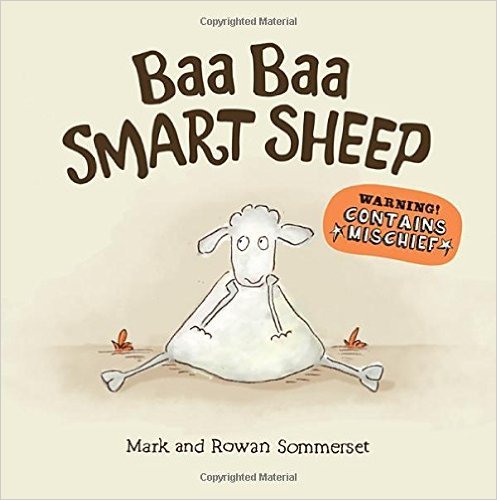
How great is Baa Baa Smart Sheep created by Mark and Rowan Sommerset? This story of a sheep that sets out to trick a turkey is laugh out loud funny and sure to gain attention. There is even a sequel out which I also cannot wait to share.
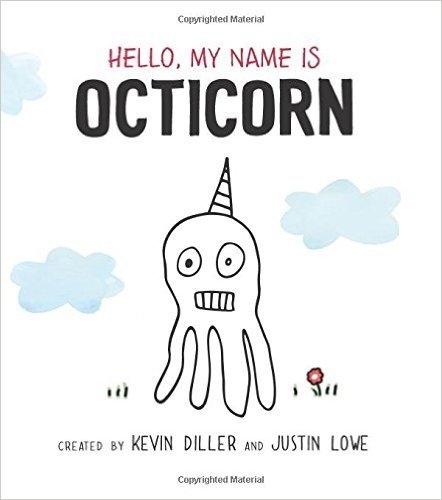
Hello, My Name is Octicorn created by Kevin Diller and Justin Love is also in my pile of books for the first day of school. Funny yet poignant in its message, this will also make a great picture book to teach theme.
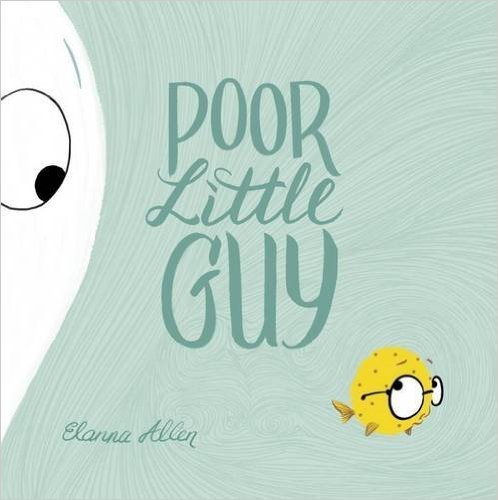
I laughed out loud when I read Poor Little Guy by Elaina Allen, but this book is not just funny, it also carries a great message; don’t judge others by their looks because you never know what will happen. I am a fan of this book.
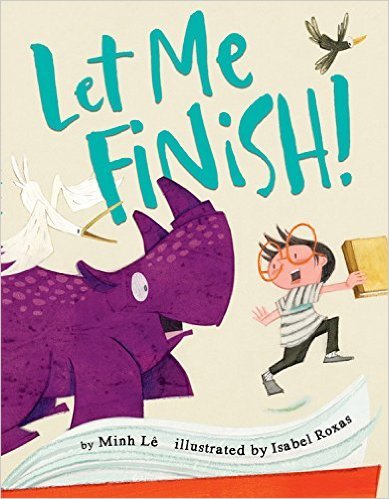
What happens when those around you decide to keep spoiling the book for you and all you want to do is read in peace? That is exactly what Mihn Le shares in his fantastic picture book Let Me Finish illustrated by Isabel Roxas. How fantastic will this picture book be for discussing reader identity?

Kwame Alexander is the reason many of my self-identified non-readers are now readers, so this picture book was a given. Come to find out Surf’s Up illustrated by Daniel Miyares (another of my favorite writer/illustrators out there) is all about the pleasure of reading. Yes please!
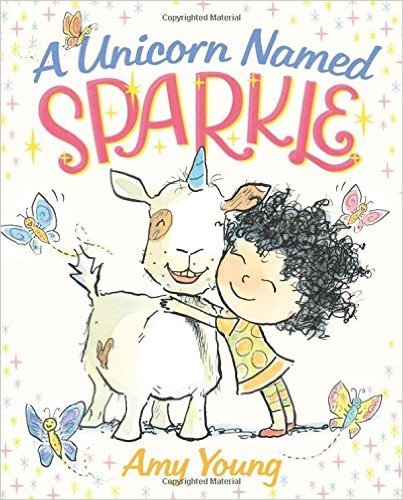
My friend Jillian Heise told me to read A Unicorn Named Sparkle by Amy Young because I would love it and she was right. Funny yet with such a great message about how we can fall victim to wrong impressions, this book is a great book for all ages.
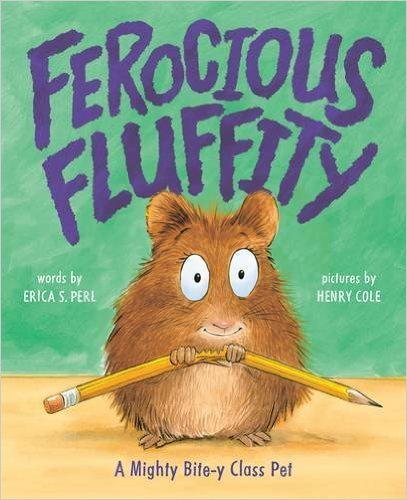
What happens when your classroom pet turns out not be so ice and cuddly? Ferocious Fluffity written by Erica S. Perl and illustrated by Henry Cole is a tale of just that. Sure to hold their attention and make us laugh.
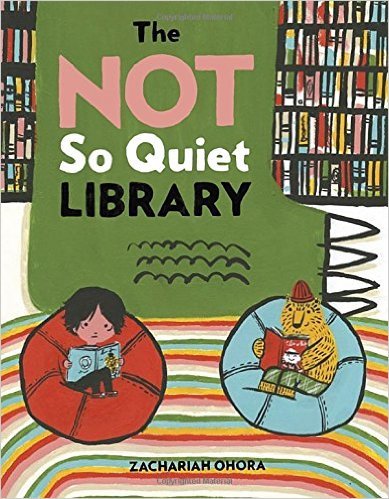
What happens when an angry monster shows up at the library and interrupts Oskar and Theodore’s quiet time? Well, you will have to read The Not So Quiet Library by Zachariah Ohora to find out. What a fantastic way to introduce our classroom library that should not always be quiet.
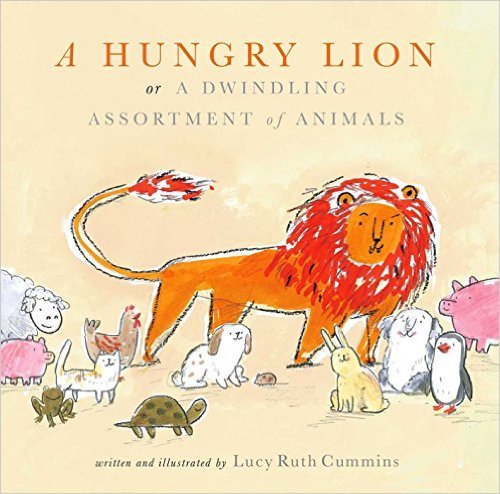
Every person I have had read A Hungry Lion or A Dwindling Assortment of Animals by Lucy Ruth Cummins has loved it. Funny and surprising, I have loved the reaction that children and adults have to this book. What do we do when our initial prediction turns out not to be true after all?
There you have it, my 10 picture books for the first day of school and also my blog post for the fantastic Picture Book Ten for Ten that happens every year on August 10th. Make sure you check out the hashtag #pb10for10 and all of the other great posts to receive some more inspiration.
To see all of our lists for favorite picture books, please go here.
Filed under: being a teacher, books, Literacy, new year, picture books, Reading


August 6, 2016
A Few Ideas for a Better Organized Year

Our school is under construction and dust covers most surfaces as we enter. I have been in and out of my room, setting things up, getting excited, and yet, because of the construction there are a few things that I am not able to do yet. The unfinished to-do list seems to haunt me everywhere.
Staying organized is something that most of us do well as educators. We know that we are setting an example for the students, we know we have to stay on top of all of our piles, especially when we teach more than just one class. Yet sometimes staying organized seems to be just one more thing to-do on our ever expanding to-do lists. One more thing to get done before we can actually work. That is why over the years I have adopted a few small ideas that help me stay organized in our classroom.
The 1 minute rule. If something can be accomplished in under 1 minute then I do it right away, because all of those 1 minute things quickly add up to way more than 1 minute when left unfinished. That means most papers get filed away, most things are put in their right places and short replies are given on emails. This year I may try to expand it to the 2 minute rule.
Where does something want to be? I pay attention to where I place things naturally in the classroom and set up organizational spots for those things. This is why my students finished work is not by my desk but by the front. This is why my book stamp is right next to my computer rather than by the books. All of these seemingly strange places for things happened because I paid attention to where I naturally wanted to place things rather than where the room told me to put them.
Letting go of paper. Paper can be a monster in itself, so I have learned to purge. While I am nowhere near embracing a paperless classroom, I do feel better about the lack of files I have because there is less paper to sort through. I don’t really use any type of worksheet so most of our papers are classroom sets of texts.
Solicit student help. Students should feel like this is “our classroom,” which means they are expected to clean up after themselves. They may seem self-explanatory but I have noticed that students often don’t see the same mess as I do. So I point it out and I ask them for help. The last 3 minutes of the day are also used to stack chairs, pick up, and reset the classroom.
Purging the big stuff. In the past I had too much stuff in our classroom. Taking a hard look at our furniture and what we did not use helps keep the clutter down.
Replying right away to email. I hate having a full inbox so if something can be handled right away, I do it. I don’t strive for inbox zero, but the emails I have in my inbox should be reminders not more things I have to do.
Set up for the next day at the end of the day. I have a 35 minute commute and while I try to get there at 7 AM every morning, sometimes traffic does not agree. Cleaning up my space and setting materials out for the next day means I don’t feel rushed in the morning. Taking those extra few minutes the day before to get ready means that I can walk in and work on something else or even just catch up with a co-worker if I need to.
Don’t send that email. With the ease of emails I think we sometimes send unnecessary ones. I have tried to call people more to ask a quick question rather than send them that email. I am aware that every time I send someone an email, I am creating another to-do for them.
Checking my mood. I have found that if my work space is disorganized or cluttered, I get grumpier as a teacher. So if I seem to be having one of those days where I am in a funk, my environment is almost always playing a role. Therefore taking a moment to re-organize, file, or de-clutter will almost always help alleviate my stress level.
Leave notes for next year. When a day is done, or a lesson, I try to leave a few notes for next year in my lesson planner or document, in case I end up teaching that same lesson. That way things I think I will remember as I go to tweak something are actually remembered and the ideas are not lost. Doing it at the end of the day also means that it does not become one more lingering thing to do.
The Bullet Journal. My husband introduced me to this way of keeping track of to-do’s and other lists that I need to make. I love the simplicity of it and have to adapted it to my own needs. I also try to end most days with a “Happiness is..” list where I list all of the things that made me happy that day. This helps me see the bigger picture at the end of the day and helps un-clutter my mind.
Keeping our classroom simple. The less stuff you have, the less stuff you have to organize. While our classroom may seem sparse to some, to me it means room to breathe and move. Everything has a place and if something is not used, it goes. Being mindful of the piles means that my stress level stays sane.
Getting things done right away or as soon as I can means that nothing builds into a mountain. Rather than wait for the weekend to assess that big pile of assignments, I start on it right away, chipping away so it gets done. My students also tell me they appreciate the quick turn around, after all, they met their deadline for the project and would like to figure out what to work on now. They cannot do that if my part isn’t done.
There you have it, a few ideas for staying more organized, especially if you teach 100+ students. What are your favorite ideas for staying organized?
Filed under: being a teacher, new year, organization


August 3, 2016
With All
With all of the negative that surrounds us.
With all of the headlines that tear us apart.
With the reports of more death, more violence, more hatred being spewed filling our airwaves every day.
In a world where children get sick, where children go hungry, where some have so little and others have so much.
In a world where inequity is the new normal and disengagement is the norm.
Can we please create classrooms where students feel safe?
Where they feel welcomed?
Where they feel like they belong. That what we do matters. That how they feel matters. Where they do not have to adopt another persona to be accepted but can be who they need to be.
In a world that seems hellbent on tearing our hearts open, can we please, as educators, make it our mission to create classrooms that work for all children, no matter the life they leave us for. No matter what they face outside our walls? It seems to be the very least we can do.
Filed under: being a teacher, being me


August 1, 2016
As We Plan Our Reading Classes

We start almost every single day with 10 minutes of reading in our classroom. With 10 minutes dedicated just to eye on eye on text. With 10 minutes dedicated to the noble pursuit of falling into a great story. I wish we could dedicate more time, but teaching 45 minute English blocks, means that 10 minutes is all I have been able to give so far. To an outsider it may look like not much teaching happens, like there must be more important things to do than just the solitary pursuit of story. In fact, when I first started embracing independent reading time, I remember making excuses to my principal as to why I wasn’t teaching more at the time. I am sure he didn’t need the excuses, but I thought he did. And that’s it, isn’t it. We mistakenly think that when students are sitting in silence, hopefully immersed in a book, that we are not doing our job as teachers. That we are somehow not fulfilling our responsibility or promises.
So we cram as much other stuff into our English classes and leave independent reading time for those days where we have the time. We plan our lessons down to the last-minute and plan for reading last so that it becomes a reward at the end if we get through everything else. We plan for it once a week or every couple of days hoping that that is enough and then we sacrifice the time set aside the minute we must cover something else. Our independent reading time is hardly ever sacred because it doesn’t look like real teaching.
Yet when we speak of developing readers. When we teach reading. When we teach English; silent sustained reading time with support should be the very first thing we plan for. The very last thing we sacrifice. Our independent reading time should be the one thing that does not get cut. The one thing that we must fit everything else around. This is not just a fancy notion, it is research based, just see this post that the incredible Donalyn Miller took the time to put together. There is so much research out there supporting the notion of every child needing time to read in school that entire books have been written to defend it. (Here’s just one of them!). And if you are an administrator reading this, you are instrumental in making this happen.
I get it too. I already feel the panic of the upcoming year and all of the things we should experience. I already get nervous when I look at how few days we really have together and just how much we have to do. Yet in the past many years as a teacher of reading and English, the time to read has been the one thing that has made the biggest difference. So we can hope that our students will read outside of our classrooms, perhaps they all will, or we can make sure that we give them the one thing that is the most important in our instructional time; time to read. Time to find a book. Time to develop a reading life. We can assign reading, we can punish those who don’t, or we can simply build our classes around the need for reading, even if we teach in incredibly small blocks of time.
Independent reading time should be a right for all children in English, not just for those who got through whatever they needed to get through. It should be a guarantee for all of the children that enter our doors, much like those who enter a science classroom know that they will, indeed, do science. So why is reading any different?
I am currently working on a new literacy book, two separate literacy books. While the task is daunting and intimidating, it is incredible to once again get to share the phenomenal words of my students as they push me to be a better teacher. The book, which I am still writing, is tentatively Passionate Readers and will be published in the summer of 2017 by Routledge. So until then if you like what you read here, consider reading my book Passionate Learners – How to Engage and Empower Your Students. Also, if you are wondering where I will be in the coming year or would like to have me speak, please see this page.
Filed under: being a teacher, Literacy, Reading, Reading Identity, students


July 28, 2016
Review: When We Was Fierce
I first read When We Was Fierce by e.E. Charlton-Trujilla and loved it. Once I got used to the “invented” language I couldn’t put it down. It was a perfect book in my eyes; free verse, a genre that my students and I adore. The rip-you-apart story. The fast-paced narrative. I was excited to get this in the hands of students knowing that much like my own heart broke, they too would get sucked into the story of T and his friends as they tried to survive in the inner city. I told my friends and colleagues to read it, even declaring it one of the must read books of the summer on Twitter.
A few days later, I woke up to this post on the blog Reading While White called When Whiteness Dominates Reviews systematically dismembering the book that I had just raved about. I was stunned. I felt stupid. I felt ashamed, once again made aware of how my own white privilege had colored my judgment. So I knew I had to learn more, I read more reviews, reached out on Twitter and quickly found the same views being shared; this book is unjust, this book should not be in classrooms. And it dawned on me…in my own heartbreak over the book. In my own eagerness to proclaim this book a must read, I had forgotten to check myself and the narrative that I had fallen in love with. I had forgotten to think of the picture that this book paints of what it means to be a young African American man in the US. That this book is probably the opposite of what my mostly white students need because it once again affirms the narrative that the media and others would like us to remember when we speak of inner city America. That this book, in its eagerness to highlight the lives of young men, may do more damage than good.
So for the past week I have watched the debate unfold, I have seen the responses of critics and praises, I have tried to think of what it must feel like to be the author who poured her heart into a book thinking it would be a good thing. And I have been ashamed. Ashamed at my own idiocy. Ashamed at how little I know. Ashamed at how quickly I bought into the same tragic story as a way to make my students think, where instead I should be looking for stories that combat this one-track narrative. Because that is what my students need to know; that this is not the story of all, that this is not what always happen, that this is not reality.
In the end, the words that keep haunting me are the words from Jennifer Baker’s review. She writes, “Thinking of the young reader demographic I’d like someone to sit back and consider work created by so many marginalized artists that seeks to show an alternative while also showing truth and tell me if you would actually feel comfortable showing When We Was Fierce to a group of Black children and saying ‘This is how I see you.’”
This is how I see you. Can you imagine if white rural kids were portrayed like this? If Danish kids from small towns were portrayed that way? I would be indignant at the portrayal. I would be outraged. And so I write this review as a way to process out loud. For others to see just how easy it is to forget just how little we know. How much we still have to learn. And that’s it for me, in my own eagerness to try to add to the conversation about racial inequality I was going to give it more of the same. I was going to use this book as a way to start a discussion, but that discussion would have been about the wrong things. So now? Well, now I remember how much I have to learn, how little I know. How I cannot call myself an ally when I am so easily fooled. How we all have a long way to go in trying to change the social injustice that perpetuates our combined story. How I would never want a child to pick up a book in my classroom and think that this is how I saw them. That this is the legacy they must be forced into because that is how the world sees them. This book now becomes a teaching piece in my classroom; excerpts will be provided to discuss the portrayal, the starred reviews will be given and then the reviews that disagree. I will invite my students into the debate so that perhaps they can see the danger of a single story when we let our emotions roll us into a narrative that is unjust and damaging. Hopefully they will not be as easily fooled as me.
Filed under: being a teacher


July 27, 2016
We Can Be
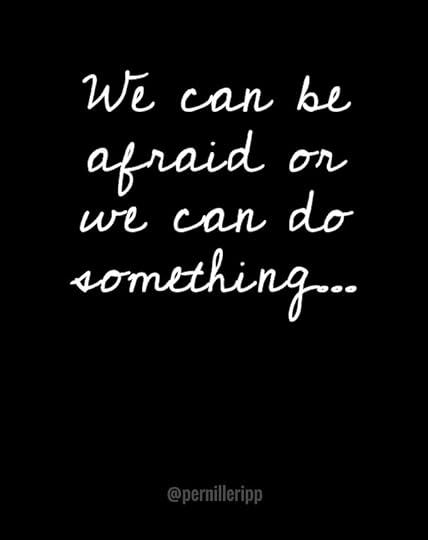
We can be afraid of the changes that are coming. We can be afraid of the ideas we have.
We can be afraid of how others may view us. We can even be afraid of what we will think of ourselves.
We can let our fears of failure, of success, or of no change at all determine our course and steer our path.
As educators we can spend a lot time being afraid. We can spend a lot of time thinking about all the things that can go wrong, that probably will go wrong, that must certainly will go wrong. We can think of all of the reasons why something won’t work, won’t fit, won’t do.
Or we can stop.
We can stop waiting for permission that may never come.
We can stop worrying about what others will think.
We can stop waiting for everyone to get on board, for others to speak up, for someone else to take the lead.
We can wait for the better teacher.
We can wait for better students.
We can wait for a better team, or a better administration, or a better time, or district, or state.
Or we can do .
We can try.
And we can change.
Because our students are waiting for permission to be taught. They aren’t waiting for another teacher to show up, or to go to another school, or to be told that school is about them again.
So what is your choice?
If you like what you read here, consider reading my book Passionate Learners – How to Engage and Empower Your Students. Also, if you are wondering where I will be in the coming year or would like to have me speak, please see this page.
Filed under: Be the change, being a teacher


July 20, 2016
A Few (Or More) Great New Picture Books
Oh summer, I love you for many reasons; waking up because my children ask me to get up and make them breakfast and not because of the alarm, nights on the deck, lightning bugs, and naps, I am fairly certain, I could be a professional napper. And the books…oh the books. How much sweet er is summer time reading where I have the time to sit for an hour or more and just fall into the pages of the books I choose? Or time to grab a whole stack of picture books and read them end to end, pretending not to notice how much they will cost me but knowing that they will make our school year that much better. So I think it is time to share a few (or more) of my very favorite reads of this summer. Some are out now, a few are coming out soon.
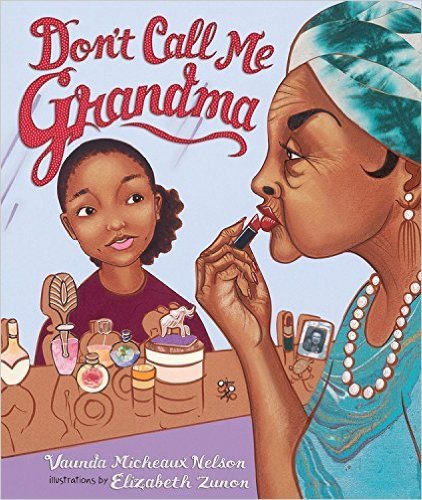
Don’t Call Me Grandma written by Vaunda Micheaux Nelson and illustrated by Elizabeth Zunon is not at all what I expected. I loved the narrative of the grandma that is not like a grandma is supposed to be and then the unexpected hints of why she is the way she is. I will be using this one for teaching Contrast & Contradictions from Notice & Note. To see all of the picture books I like to use for that, go here.

I have used Kobi Yamada’s book what Do You Do With an Idea for a while now and was eager to read his latest What Do You Do With a Problem? What a fantastic addition to any classroom library for the message it sends of resilience and also the conversations it may lead to.

Another fantastic picture book to discuss problems and anxiety is Jack’s Worry from Sam Zuppardi. I love the illustrations of how Jack’s worry follows him around and how he ends up solving it. Many children would benefit from this book in their classrooms.

Hello, My Name is Octicorn created by Kevin Diller and Justin Love is in my pile of books for the first day of school. Funny yet poignant in its message, this will also make a great picture book to teach theme.
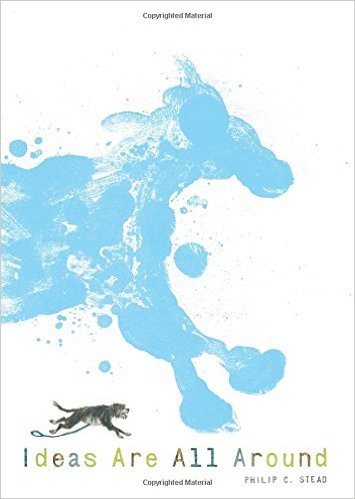
What do you do when you are supposed to write but just don’t have any ideas? You read Ideas Are All Around by Philip C. Stead. Beautiful illustrations coupled with a story that will make you think, this is a must for any writing workshop classroom.

I laughed out loud when I read Poor Little Guy by Elaina Allen, but this book is not just funny, it also carries a great message; don’t judge others by their looks because you never know what will happen. I am a fan of this book.

Baa Baa Smart Sheep by Mark and Rowan Sommerset is so wrong, yet so right. This book and its sequel I Love Lemonade are both worthy additions to any classroom library that is looking to recapture the fun of reading. I cannot wait for the reactions of my students when they hear this book.

While I have been reading about the controversy surrounding Thunder Boy Jr. the debut picture book from Sherman Alexie and illustrated by Yuyi Morales, I think it is a great addition to our classroom. I believe that a picture book that has controversy surrounding it is always a great addition because it will offer my students a perspective into something they may not otherwise think about. Beyond the controversy though, it is also a picture book that speaks of pride in self and culture.
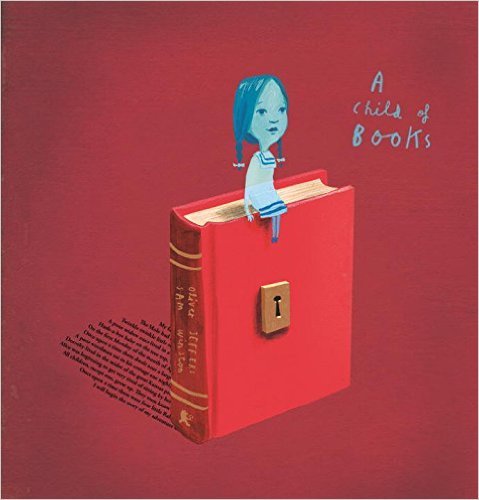
I have few words for this brand new picture book A Child of Books written by Oliver Jeffers and Sam Westman. It is as if they went into my mind and gave me everything I need to try to convince children that writing can be magical. Beautiful. This is out in September, I encourage you to pre-order it now.

School’s First Day of School written by Adam Rex and illustrated by Christian Robinson (who is a brilliant illustrator) is the book I secretly hope all of my students want read aloud on the first day of school. Written from the perspective of a school and its first day, I love the feel of the book, the theme of the book and immediately reread it after the first read through.

What happens when those around you decide to keep spoiling the book for you and all you want to do is read in peace? That is exactly what Mihn Le shares in his fantastic picture book Let Me Finish illustrated by Isabel Roxas. How fantastic will this picture book be for discussing reader identity?
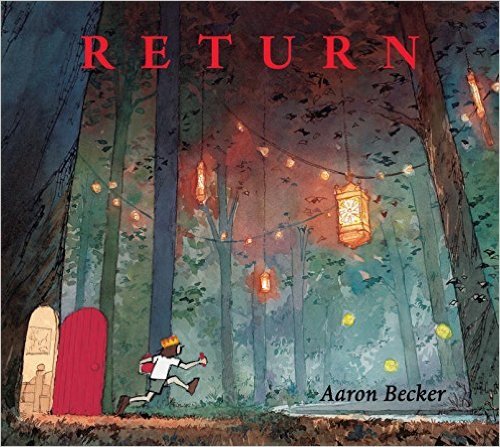
Return by Aaron Becker is simply a masterful conclusion to his extraordinary trilogy that started with the book Journey. What a powerful set of wordless picture books.

Finding Wild by Megan Wagner and illustrated by Abigail Halpin takes on a quest into the wild. Beautifully illustrated with a text that begs to be shared, this is a great text for descriptive writing.

In my book Cale Atkinson can do no wrong and he goes on to prove that in Explorers of the Wild. A dual part narrative that would be an amazing way to talk about how we judge others based on assumptions rather than knowledge.
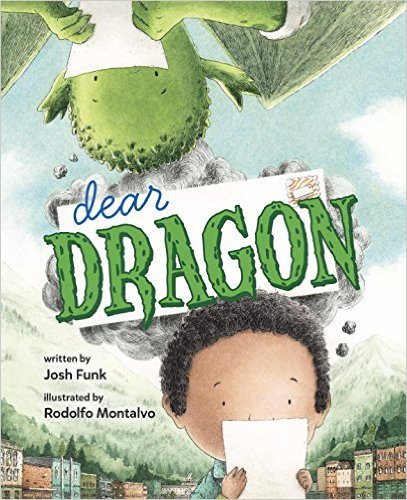
Another incredible dual perspective picture book is Dear Dragon by Josh Funk and illustrated by Rodolfo Montalvo. Not only do I love the story of the two narrators a lot, but also how this book can lead to bigger conversations about what we assume when we hear someone share their story. As I get ready to teach social justice, this book is the perfect entry into the danger of a single story. This book is out September 6th, but is a must for pre-ordering.

Kwame Alexander is the reason many of my self-identified non-readers are now readers, so this picture book was a given. Come to find out Surf’s Up illustrated by Daniel Miyares (another of my favorite writer/illustrators out there) is all about the pleasure of reading. Yes please! This is also in my first day pile of choices for my students.

You haven’t seen amazing non-fiction writing if you have not read Pink is for Blobfish written by Jess Keating and illustrated by David Degrand. Not only is this a book that students have to pick up when they see it, they keep returning to it. What a fantastic mentor text for how to do nonfiction writing right.
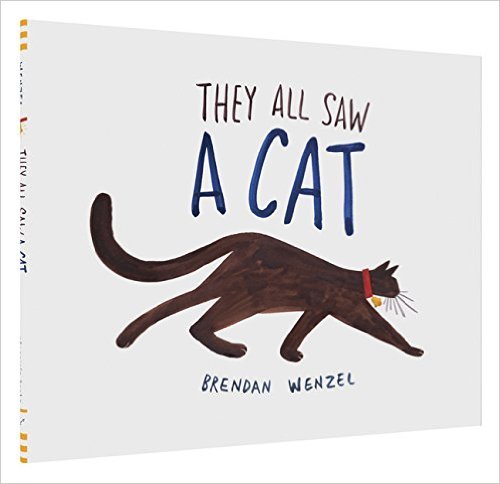
I was lucky enough to be given a finished version of They All Saw a Cat by Brendan Wenzel at ILA. It is gorgeous. It is mesmerizing. And it is for all ages. This book….yeah…there may be some awards in its future. I cannot wait to use it to teach multiple perspectives. It comes out August 30th, definitely worth ordering now.

What happens when you stop trusting yourself and instead start listening more to everyone else’s opinion? Find out in Bertie Wings It written by Leslie Gorin and illustrated by Brendan Kearney. What a great conversation starter about staying true to yourself.
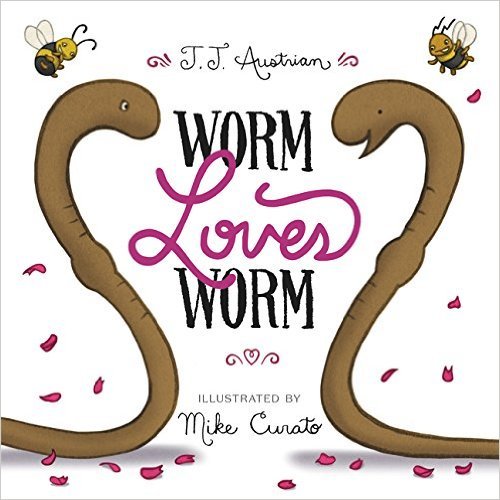
I hope it comes as no surprise that I would love the picture book Worm Loves Worm written by J.J. Austrian and illustrated by Mike Curato. A picture book that makes us think about the labels we feel inclined to put on people and how unnecessary they can be; yes please.
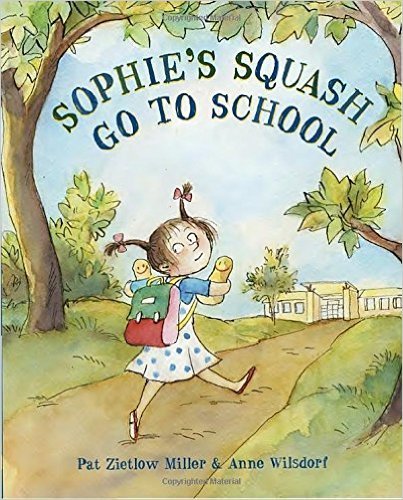
Pat Zietlow Miller continues to enthrall me with each new release. Sophie’s Squash Go to School is the sequel to the super funny Sophie’s Squash and a great sequel indeed. I love the theme of friendship and acceptance and also how it builds upon the first book.
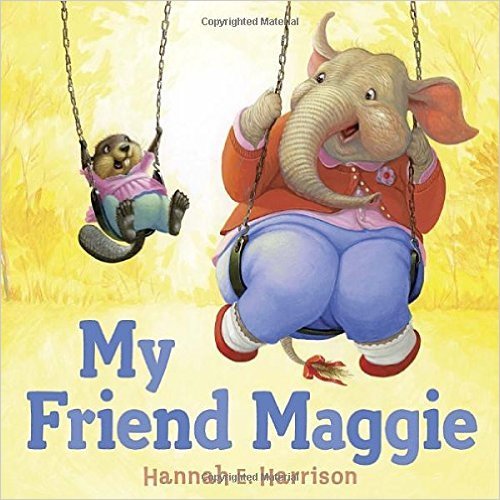
I first fell in love with the work of Hannah E. Harrison when I read Extraordinary Jane (this is another must add to your library) and her latest picture book My Friend Maggie is incredible. What happens to a beautiful friendship when an outsider starts to criticize one of the friends? Pre-order this picture book, out August 9th, and find out.
Ok, I have more, but I will stop for now. And yes, I purchased almost all of these books out off my own pocket because that’s what we do, and they were worth every single penny I spent. If you want to stay up-to-date with what I am reading, I have decided to dedicate my Instagram account to that exact purpose, you can follow me there if you would like.
To see all of the many other lists of favorite books I have made over the years, go here.
Filed under: being a teacher, Literacy, picture books, Reading, Reading Identity


July 18, 2016
Some Small Ideas for Implementing Change in the New Year

I had my first back to school nightmare 3 weeks ago, yes in June, not even a full month into summer vacation. It was the same standard dream that I think many teachers have as they start to look forward to the year ahead; the children hate you, you are unprepared and everything tends to just get worse from there. I was surprised at how early the dream occurred at first, yet then I remembered just how excited I am for the next year. I know it may be too early for some to think about the next school year but when we have this type of job that brings us so much joy, it is hard not to get excited, even if school does not start until September 1st.
As I have been searching for new ideas, new ways to make 7th grade English a better experience for all, I cannot help but think about all of the ideas I have had previous summers. How my head has been filled to the brim, excitement building, and then something happens between the beginning of the year and the end of the year. For some reason most of those ideas don’t happen. Most of those ideas fade away. As soon as the day-to-day routine starts, our old habits take over and we just don’t do all those things we said we would. As my colleague Reidun says, “We have all of these ideas in the summer and then we get into habits and routines because we get busy.” And that’s it isn’t it? We get so busy with all the things that teaching encompasses that we tend to not add anything else on as we paddle our way through our days. But what if we were able to sustain just a few ideas? What if we planned for the busyness and that way could find the time, break the habits, and actually do some of the things we dream about? Here are a few ideas to help.
Do things now. This may sound silly but chances are you already know what you get busy with those first few days of school. So which of those things can you get busy with right now? I know that many are on summer vacation but as we relax, what little things can be done right now so that they don’t slow us down later? I plan on spending some time in my classroom this week shelving books, creating displays, and making a few copies. Nothing exciting (well maybe making displays gets me pretty excited) but all things that need to get done.
Plan for the change. If you have a great idea that you really want to implement, then schedule it. Write it in your planner, create your lesson plan, whatever it is that you need for it to happen. This is how I go through my first days if school; with a list of things I would like to accomplish and then I plan accordingly.
Change your environment. We get stuck in the same routines because our environment doesn’t change. When we work in a space that looks like it did the year before it feels as if our brain pulls us back in the previous year’s mindset. So if you want to change things, move some furniture around, change the layout, make a physical change to inspire a curriculum change.
Plan your preps. This idea is also from Reidun, but I had to share it because it is genius. We tend to focus on planning our lessons but how about we create a plan for what we will do during our preps? I know I often end up not being quite as productive as I would like because I cannot remember all of the things I would like to accomplish to begin with. So while you plan your week, or even just your day, take time to figure out what the goals of your preps should be as well.
Purge. We get sucked into our old habits because we have all the stuff to do it. So if you really want to get rid of a lesson or change something up, purge the things that go along with it. That way you might as well plan for something new since you would have to plan anyway.
Tell someone else. I have ongoing dialogue with several other educators about what I would like to do next year. Not only is this a way to get the ideas out of my head but that way they can also check in on me. We know plans feel a lot more official when we speak them out loud, so find someone to share your ideas with.
Make it visible. At the end of a school year, where I felt like I had not done enough for my readers, I wrote a post-it to myself. It still hangs right in front of me whenever I sit down at my classroom computer. It says “Find them a book.” This small reminder is all I have needed to keep trying, to keep changing, to keep working toward a better literacy environment for all of my students. So whatever your idea is, make it visible in the form of a post-it reminder or something similar. When you look at every day, it propels you forward. The other post-it I have is a quote from Shane Koyzcan’s beautiful TED Talk, it says “If you can’t see anything beautiful about yourself, get a better mirror.” It hangs there so I remember the good days, so I remember that I am not perfect but that I am trying.
And as always; start small. Often times our grand ideas fall away because we feel overwhelmed. So focus on the little things that will lead to those bigger things. Plan for those small things so that each day becomes a step toward the bigger change that you would like to see.
What do you do to keep your ideas alive?
PS: To make it official; some of my new ideas include incorportaing writer’s process by using The Yarn Podcast, doing a version of Penny Kittle’s multi-genre project, focusing more on micro writing, and also getting students more time to discuss. Now you can help me stay accountable.
Filed under: being a teacher, ideas, new year


July 14, 2016
How I Teach English in the 45 Minute Timeframe
One of the question I am asked the most is how do you teach English in 45 minutes? Not just reading, not just writing, but everything that English encompasses. And I can tell you; it is not easy, nor is it perfect, nor do I have everything figured out. The 45 minute block of time is the bane of my English existence. Yet as I have figured out it is within our biggest problems that we find our biggest inspiration, and that is very true for this situation. I have to try to make 45 minutes work while my students and I pine for more time. In fact, this is the core of the book I am currently writing; how do you create passionate readers when you barely have any time to teach, let alone have conversations?
I am not alone in this quest to solve it. Many great minds of literacy such as Nancie Atwell, Penny Kittle, and Donalyn Miller have all helped shape my thinking. As have countless English teachers that have trodden the path before me. While I rest my class on a workshop foundation, I have had to make some tweaks to make it work for us. So I thought I would share a few ideas here.
We start with 10 minutes of self-selected independent reading. Every day of the year, almost. This is the very last thing I will take away from our schedule. From the second day of school this starts and the students know to “settle in and settle down” as they fall into their book. I spend the 10 minutes conferring with 2 or 3 students, as detailed in this post here. Students have done their own attendance, all I have to do is enter it. Students can also book shop during this time. A timer or my voice brings us back when the 10 minutes are over.
2-4 minutes of book talks. I sometimes book talk the same book in all 5 classes or 5 different ones. As the year progresses, students will also book talk their books to the class if they feel like it. Inspired by Penny Kittle I do not just book talk books that I have read, but also new books that I am excited about. These book talks are a must as students try to figure out who they are as readers and should be transferred to the students when possible so they can find their reading buddies.
10 minutes or less; teaching point. I used to do a full mini-lesson every day but my students asked me to please stop. They made me see how varied their needs were so depending on what we are doing, most days we have a very short whole class discussion point or lesson. My students have asked me to instead do small group lessons or one-on-one conferring/teaching based on needs. The text that I most often use for a mini lesson is a picture book. Almost all new concepts are introduced through picture books, before we move into nonfiction, multimedia or short stories. Picture books allow us to get to the point quickly and in a way that allows all readers to access the text. They also bring a lot of joy back into our reading community. To see some of our favorites, please see all of the lists here.
The rest of class time; student work-time. Again, this looks different based on what we are doing, but most often I am either conferring with students as they come to me or I am going to them and doing coach-ins over their shoulder. If we are doing book clubs then I listen in on conversations from the side, if students are writing then I most often confer with them at a side table. All writing conferences start with me asking them what I should be looking for. They need to be able to come up with a goal for me instead of just having me check “whether it is good or not?” This is a great way to get students to take ownership over their writing and start to understand what they need to work on. Reading conferences always start with “What are you working on as a reader?”
The biggest learning point for me has been to limit my teacher-talk in order to get students to have more time. If we have a day where I know my teaching will expand beyond the 10 minutes, then I often tell the students that so that they know to expect. That way they can also understand the purpose of the lengthier instructional time. As far as figuring out which child needs what, which yes, is one of the biggest challenges, I have students self-reflect a lot, but I will also be using a sheet like this more often so that they can tell me what they need to work on.
I am not sure this post is even helpful, It could be about 30,000 more words or so, however, this should offer a small glimpse into what a typical day in our classroom looks like. We do not do reading or writing separately but often have both in a day, what we do though is have different focuses for our quarters, so quarter 1 and 3 are more focused on reading explorations, whereas quarter 2 and 4 are more focused on writing explorations. Please feel free to leave your questions in the comments if I can help in any way.
I am currently working on two separate literacy books. While the task is daunting and intimidating, it is incredible to once again get to share the phenomenal words of my students as they push me to be a better teacher. The first book titled Reimaging Literacy Through Global Collaboration is scheduled for release November, 2016 by Solution Tree. The second, which I am still writing, is tentatively Passionate Readers and will be published in the summer of 2017 by Routledge. So until then if you like what you read here, consider reading my book Passionate Learners – How to Engage and Empower Your Students. Also, if you are wondering where I will be in the coming year or would like to have me speak, please see this page.
Filed under: being a teacher, Literacy, organization, Reading


July 9, 2016
If Not Now
I started four different posts tonight, trying to find the right angle on the thoughts that have run through my mind the last few days, the last few weeks, perhaps even all summer. But I realized as I wrote each post and promptly deleted that my mind was too tired to eloquently process what it is that is running through it. So rather than wrap it in a story, rather than wrap it up in whatever example I could conjure, I figured just to write it out instead.
We may think that our voices are nothing special. That what we do only matters on a small scale. That we can never be as great as (insert amazing thinker here). That we have no business speaking, that we have no business speaking up. That we have no business proclaiming anything as truly ours. That our ideas have little worth and that surely someone else is much more deserving. That surely somebody else must be better than us.
And we can believe it. We can live it. We can make ourselves feel like the biggest imposters, sure that someone will call us out. But for what? Because at the end of the day a change will only come if we all speak up. If we see our worth. If we see the worth of the truths that our students share with us and then share it louder for them. When we say that we need a change, then we need to make that change. When we see the injustice of our school systems. When we see the disengagement. When we see the wrong. Then we must speak up.
So while I am not sure how I got to be someone others sometimes listened to, I do know this; my voice matters, but just as much as yours. So as someone once said, “If not now, then when? If not you, then who?”
When was the last time you spoke up for change?
Filed under: being a teacher





